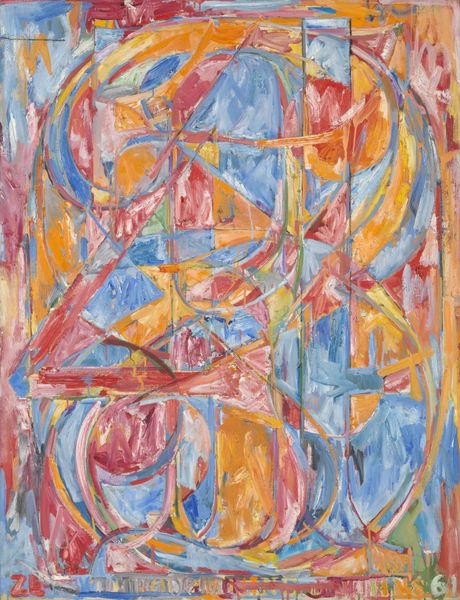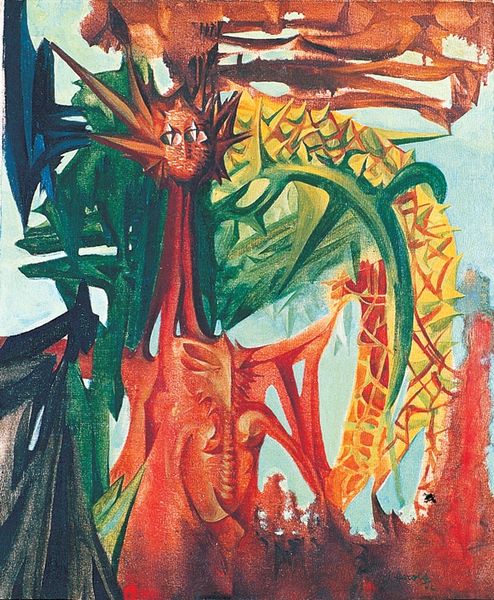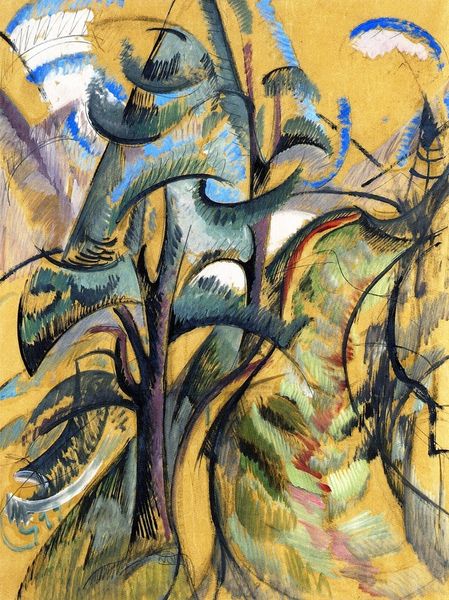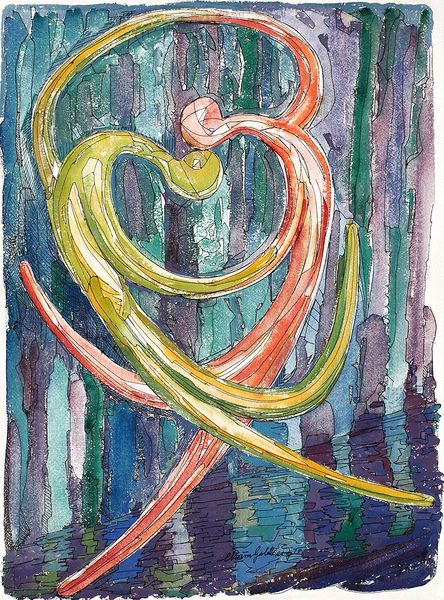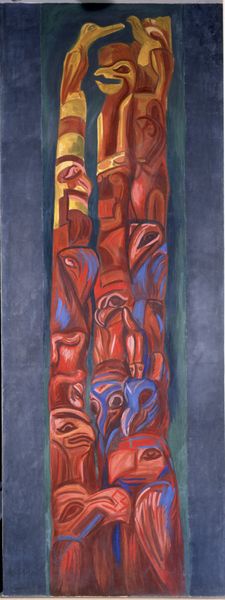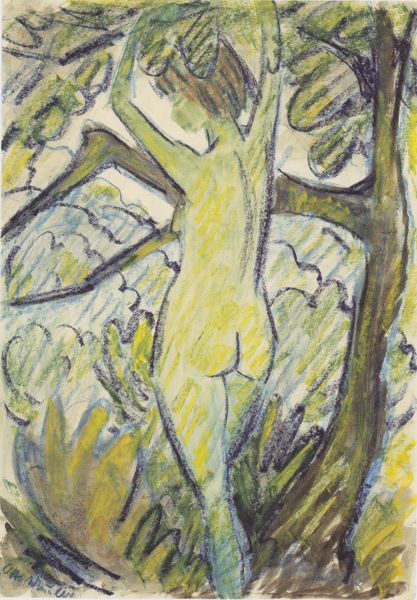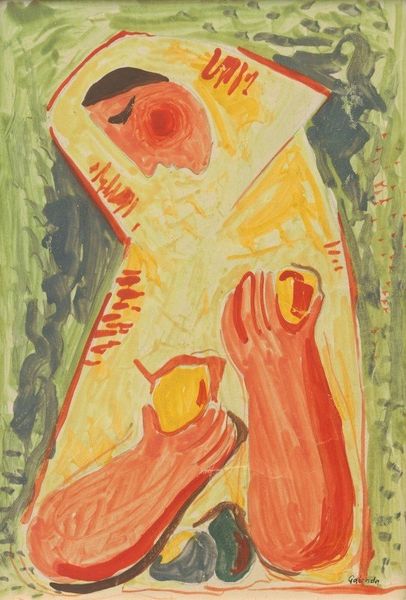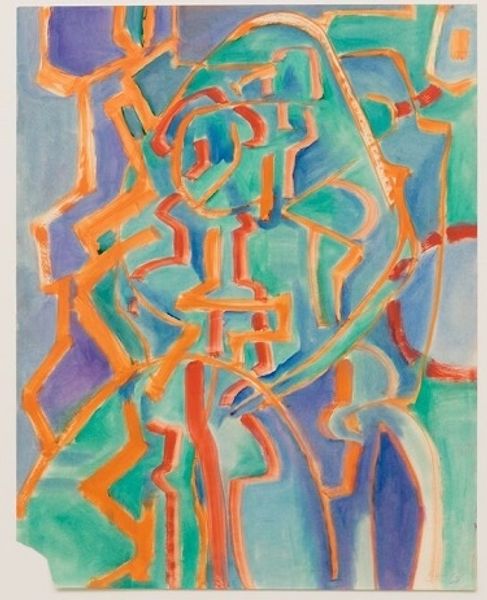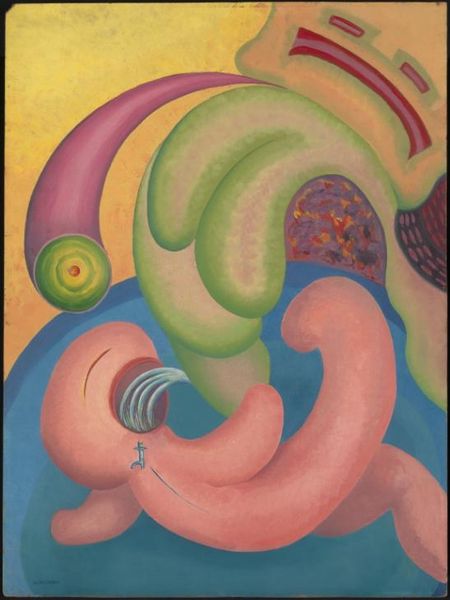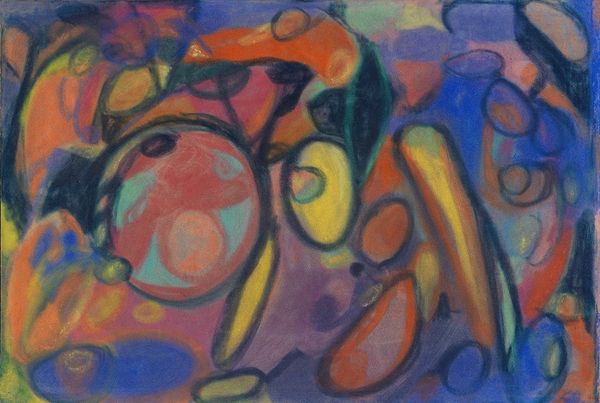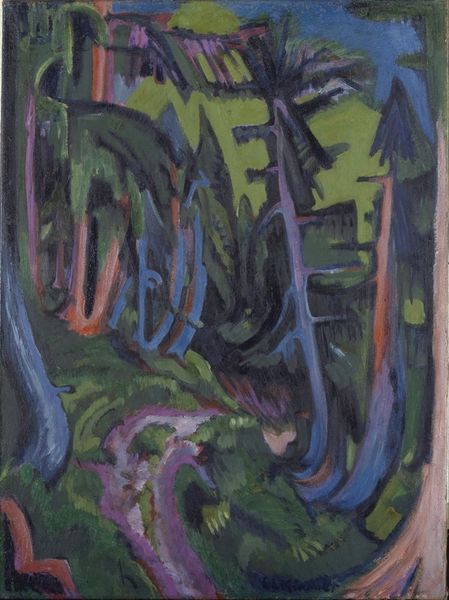
Copyright: František Hudeček,Fair Use
Editor: This is František Hudeček’s "Pharaoh's Dancer," created in 1932 with oil paint. It's quite abstract, and my initial reaction is one of organized chaos. The shapes seem both deliberate and completely random. What is your interpretation of the composition here? Curator: The dynamism certainly captivates. Note how the artist manipulates form and line to create a sense of depth and movement. The contrasting warm and cool colors—the oranges against the blues—create a visual push and pull. Consider the arrangement of geometric forms; do you see a hierarchy in their placement, or do they appear egalitarian? Editor: I hadn’t considered a hierarchy. They seemed quite balanced, almost like elements in a carefully constructed equation, even though they’re visually disparate. Curator: Indeed, balance is a key aspect. The juxtaposition of sharp, angular lines with softer, curved shapes contributes to this dynamic equilibrium. It might be worth exploring how the texture of the oil paint application contributes to the overall sense of movement and energy. How does the materiality contribute to its expressiveness? Editor: Now that you mention the brushstrokes, I can see the textural contrast more clearly; thick in some areas, thin in others. The materiality feels very present. Curator: Precisely. Hudeček seems to explore the inherent properties of the medium itself, pushing paint to its expressive limit. Do you find this analysis alters your initial understanding of the piece? Editor: Absolutely. I came in thinking about chaotic forms, but I leave appreciating the structured balance of form and color. Curator: A close look reveals layers of visual dialogue. Such structured ambiguity reflects the beauty of formal analysis; it illuminates the artistic method by what we can see, feel and measure.
Comments
No comments
Be the first to comment and join the conversation on the ultimate creative platform.
